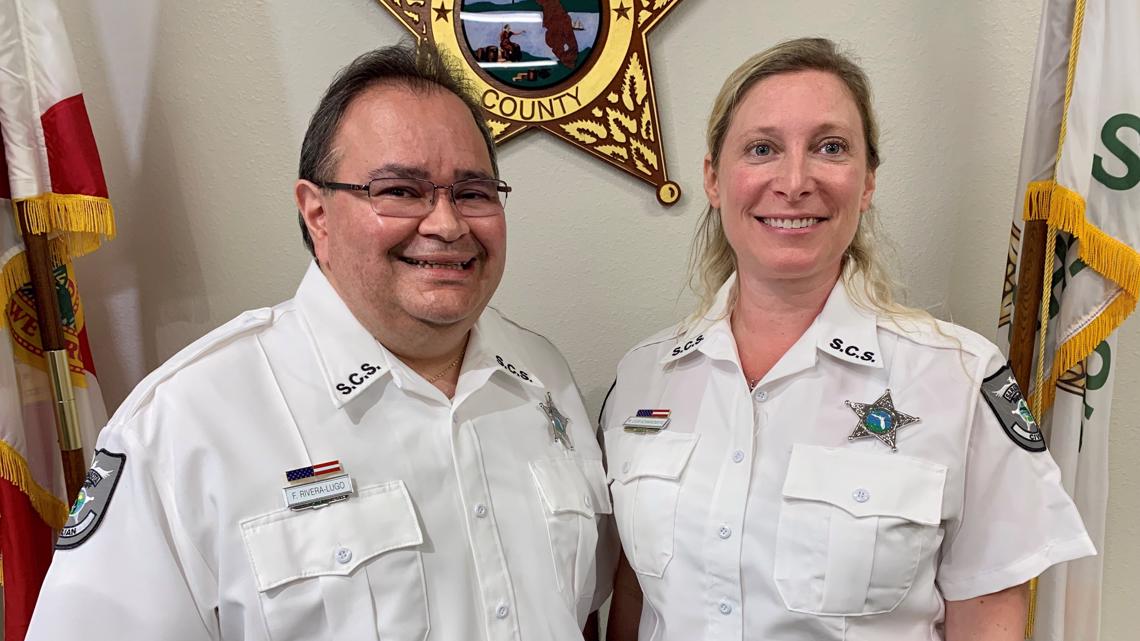SARASOTA, Fla. — “The work we’re doing here is groundbreaking,” Sarasota Sheriff Tom Knight said.
“There are few other communities in the country that has done as much work as we’ve done here in the past 10 years and the steps that we are about to take today.”
The Sarasota County Sheriff’s Office says it wants to set the bar for modern-day corrections. When Knight took over the position in 2009, he launched the first addiction recovery pod within the jail to help inmates deal with substance abuse and addiction.
The recovery pod became a model across the state. Due to the success of the addiction recovery pod, the sheriff’s office created a list of programs ranging from faith-based programming to men’s parenting, anger management, financial literacy, GED classes and more.
“If we can help them become more positive, productive members of our community and they have paid their dues and done their time, we are making our entire community better,” Knight said.
But recidivism is still a problem the community faces.
“What happens when they get out and leave the facility?” Knight said. “That’s when they are vulnerable to risk and finding their way back into our jail where we see a 65 percent recidivism rate for these low-end offenders."
After much research, the sheriff’s office realized the help provided can’t just be confined inside the walls of the jail, but also on the outside once they are released.
"For many of these people who we’re releasing from this facility it’s like climbing a mountain for them," Knight said. "They don’t have us to help them and that’s what we’re going to provide to them now."
Knight says it was time to try something different. He wanted to provide assistance in climbing that mountain in front of them so they may re-enter the community and workforce as a better person.
“Not everyone is going to take the help and we realize that,” Knight said. “And we realize not everybody is going to be successful, but 65 percent recidivism is too high."
The sheriff’s office created two new positions known as “re-entry navigators.”
These navigators will begin their work while inmates are still behind bars. They’ll provide guidance and ensure inmates have access to a range of practical and emotional support services both before and after they are released back into the community.
"These are people who have already completed and done their sentencing, so I believe everybody does deserve a second chance," Fernando Rivera-Lugo said.
Rivera-Lugo is one of the re-entry navigators. He's no stranger to working inside the jail, but with this position, the work has just begun.
"You can see [some inmates] are ready to move forward and get the help that they need," Rivera-Lugo said.
He says, with only a week in, the men and women in orange are already asking for help. But Rivera-Lugo says it's not only about taking, but giving.
"I’m not going to do it for you. You have to also," Rivera-Lugo said. "I’ll guide you and I’ll help you, but you have to work at it, too."
Michelle Louis-Schnakenberg is the other re-entry navigator. She's only been with the Sarasota Sheriff's Office three weeks now but believes her background in mental health will be a major asset to her new role.


The two navigator positions are completely funded by the Gulf Coast Community Foundation. Knight said they are the key partners in creating a link between the jail and the outside.
“For me as sheriff, Gulf Coast was a perfect partner because they are proactive leaders who are willing to tackle difficult regional issues," Knight said. "They can also leverage a wide network of donors and resources to address big complex challenges like we are talking about here.”
Dr. Mike Pritchett and his team from the Gulf Coast Community Foundation thanked the sheriff’s office for their innovation and boldness to do something like this.
After touring the jail and meeting some of the inmates, Pritchett says he saw hope.
“We found a perfect opportunity for us to intervene,” Pritchett said. “These navigator positions will point out a direction for them to head, that will hopefully lead to less recidivism and greater success for these former inmates.”
Knight says this new program is targeting low-end offenders who are usually committing property crimes, who have a drug addiction problem or mental health issues.
“By ending the revolving door of arrests and recidivism for lower-level offenders were also reducing crime, we’re reducing homelessness, panhandling, unemployment and poverty here in our community,” Knight said.
He says this new program will also improve mental health and physical health, making neighborhoods safer, our quality of life better and the burden on taxpayers reduced.
He says it costs no less than $80 a day to house an inmate. But Knight believes the re-entry navigator program will cut down on costs.
“By not having [repeat offenders] in there, reduces all of our expenses on personnel costs, medical needs and everything that goes inside a facility that feeds over 900 people a day,” Knight said.
In the past, the sheriff has faced pressures to build a second jail because of overcrowding. In 2008, before Knight, there were discussions on funding an $86-million jail. Knight says that wasn’t necessary.
“All the pilot programs we’ve done and all the things we’ve done have helped reduce the jail population,” Knight said.
Now, the sheriff's office is talking about an opportunity to build a secure facility instead of a jail. Knight says he’s hoping the board of county commissioners agree with them on not burdening the taxpayers with a $100-million jail.
“I would never build a $100 million jail,” Knight said. “A county jail is an antiquated philosophy of corrections. There’s a better way to do business and a cheaper way to do business and we believe we have it.”
What other people are reading right now:
- Longtime school bus driver will be laid to rest in school bus casket
- Rod Blagojevich returns to Chicago after Trump commutes sentence
- Jars of preserved human tongues found hidden in Florida home
- Ryan Newman 'awake and speaking' in hospital after Daytona 500 crash
- Neighbor killed Faye Swetlik the day she went missing, killed himself days later, police say
- Nurse treating NICU baby also treated the child's father decades ago



